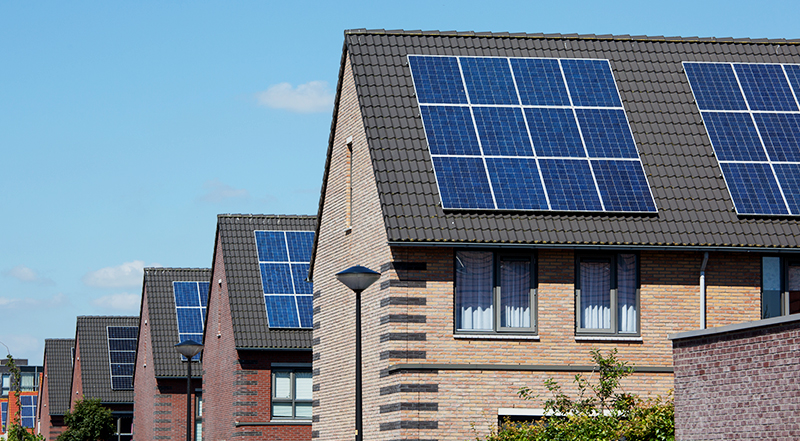How frameworks can deliver warm, safe and dignified homes
Procurement frameworks are often seen as back-office tools, but when designed with responsiveness and resident wellbeing in mind, they become vital levers for delivering safer, warmer and more dignified homes across the social housing sector.
Across the social housing sector, the drive to deliver warm and healthy homes is rightly seen as central to decarbonisation and asset improvement. But it is also a matter of resident wellbeing, dignity and safety.
Energy-efficient upgrades like new doors, windows, ventilation systems and heating aren’t just technical solutions. They make homes feel secure, reduce the risk of damp and mould, and restore a sense of pride among residents.
Yet for social landlords, the pressure to act quickly on these issues is intensifying. The introduction of Awaab’s Law and the urgent need to respond to housing quality complaints means that delivery models must not only be compliant but also agile.
The challenge lies in reconciling long-term retrofit plans with the need for immediate interventions. As winter pressures mount and tenants increasingly report cold, damp conditions, the gap between strategic planning and day-to-day repairs can expose landlords to reputational and regulatory risk.
Frameworks as platforms for quick and trusted action
This is where public sector frameworks come into their own – not just as compliant routes to market, but as platforms for responsive delivery.
When landlords work regularly with contractors through frameworks, they build familiarity, trust and knowledge of local stock. This enables quicker mobilisation, particularly in emergency or urgent works situations.
If a landlord is already working with a contractor through a framework, they can make ad-hoc call-offs when response times matter.
The ability to act at pace is vital. But so is acting with purpose. Frameworks designed with tenant outcomes in mind – such as those covering windows and doors, roofing, retrofit and internal modernisation – directly support safer, healthier and happier homes.
These are not simply procurement exercises; they are frontline investments in people’s wellbeing. When procurement is aligned with whole-home thinking, it becomes a powerful tool to reduce fuel poverty, improve mental health and foster greater security and comfort.
Putting tenants at the centre of delivery
Resident experience must be central to this approach. Framework-led projects that include early consultation, especially where major works are involved, consistently lead to better engagement and fewer complaints.
Section 20 of the Landlord and Tenant Act 1985 legally requires landlords to consult with leaseholders before carrying out major works. Though often seen as procedural, this offers a real opportunity to explain the benefits of upgrades and build trust in the delivery programme.
Tenants care deeply about their homes. When you explain to them why you're upgrading kitchens, bathrooms, or insulation to improve safety and wellbeing, they get on board.
Bridging the gap between urgent need and strategic planning
The ability to link short-term responsiveness with longer-term improvement also helps landlords to manage resources more effectively.
For example, interim repairs carried out by known contractors can serve as preparatory work for larger scale retrofit funded through the Warm Homes: Social Housing Fund (formerly the Social Housing Decarbonisation Fund) or Public Sector Decarbonisation Scheme bids.
By working within frameworks, landlords can take a phased approach – ensuring urgent works are dealt with quickly, while planning for wider asset improvements without starting from scratch each time.
Delivering social value alongside energy efficiency
Crucially, these frameworks also embed social value from the outset. From helping to facilitate apprenticeships and local employment to reinvestment via community benefit funds, the ripple effects of warm and healthy home upgrades extend beyond the property line.
The Procurement Act, which came into force in February, mandated this approach in a move from Most Economically Advantageous Tender (MEAT) to Most Advantageous Tender (MAT).
When done well, procurement is one of the most powerful tools landlords have to deliver dignified, energy-efficient homes that people can feel proud of.
Frameworks that combine speed, quality, and social value are not just about meeting regulations. They are about restoring faith in the landlord-tenant relationship and creating places people genuinely want to call home.
Procurement must be recognised as a frontline function in social housing. When frameworks are used strategically, with the right suppliers, local insight and tenant engagement, they become key to delivering not only decarbonisation targets, but healthier, safer and more dignified homes for residents.
LHC is headline sponsor of HOMES UK on 25 and 26 November. You can speak to Rory on Stand U870 and hear more from his colleagues taking part in various panel discussions over the two days. Find out more via: www.lhcprocure.org.uk/news/news/meet-our-team-of-experts-at-two-industry-leading-events-this-november


